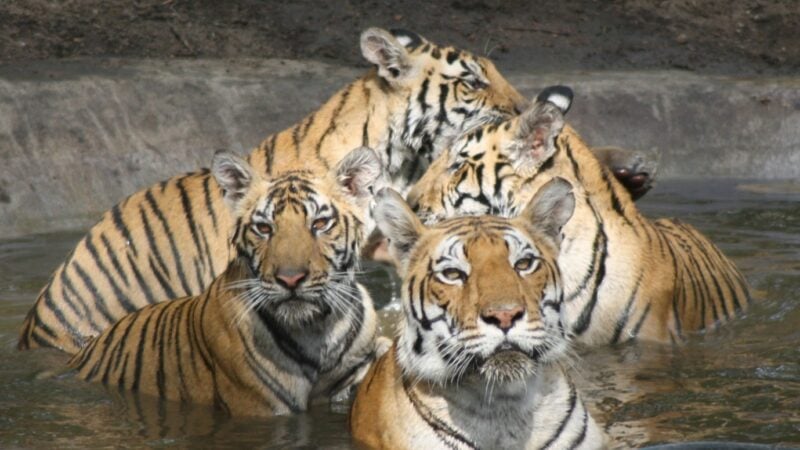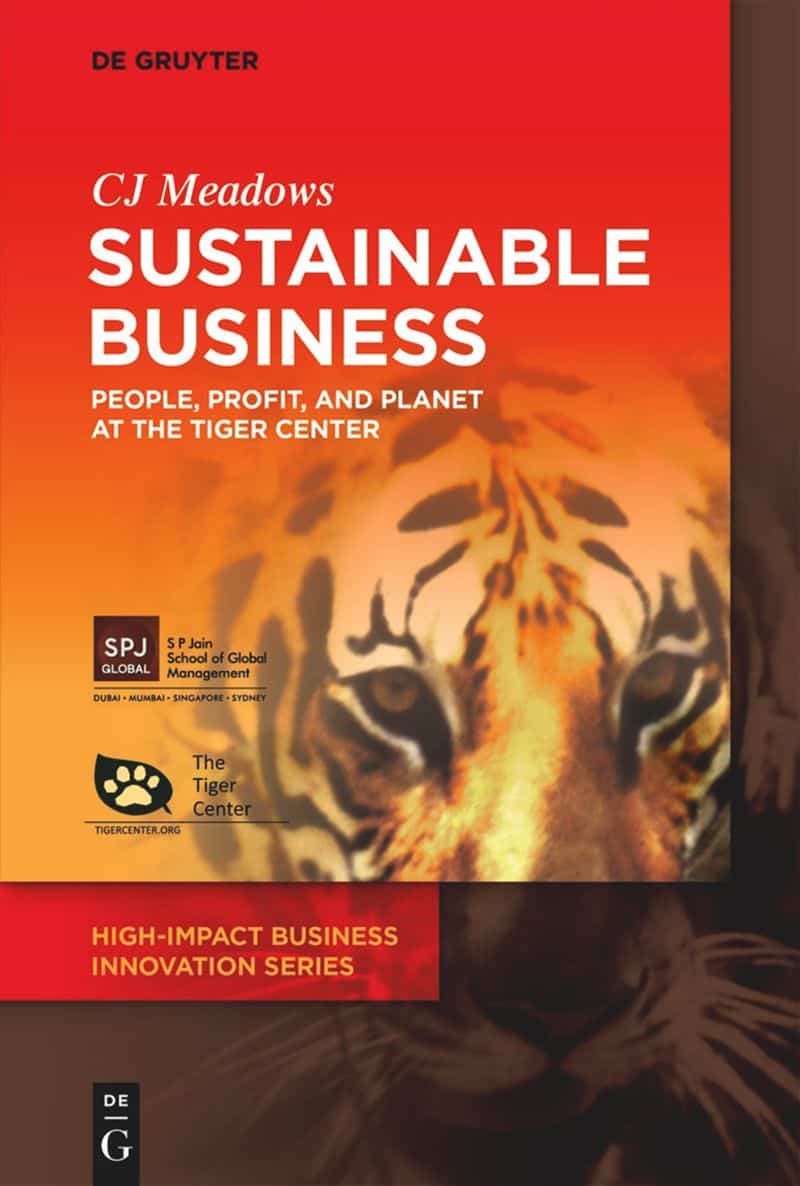Save the Planet, Grow the Economy! Lessons from Tiger Conservation
For too long, we've separated ecology from economics and economics from ecology, often leaving local people out of the equation altogether. However, a tiger conservation project in India shows us how these frameworks can work together seamlessly for a sustainable future.
Dead tiger: USD 24
Tiger pelt: USD 600 – 965
Tiger bones: USD 1,450
Live-tiger economic value: USD 2.2 million per year.
(First figures 2004, last figure 2017)
In 2005, I was heading towards a meeting with the Indian Forest Service when it was abruptly cancelled. All the tigers in the Sariska Tiger Reserve had disappeared – poached – seemingly overnight. Investigators spoke with community members and not one of them reported seeing any strangers around asking questions or buying food, water, or lodging. Not one.
Anyone who’s ever lived in a small town or village can tell you how unlikely that is. Why would anyone help poachers? Simple: to earn income and get rid of a supposedly dangerous pest. The price poachers received for a dead tiger back then was almost half the annual income of a typical farmer in rural India. Although tigers don’t normally prey on humans, there can be conflicts, such as a tiger taking a farmer’s ox, preventing him from planting his sole crop of the year, or harming someone who startled the tiger while gathering firewood, cattle fodder or wild honey.
How could the villagers have known the potentially life-changing value of what they’d lost?
What’s a Tree Worth – or a Tiger?
Sariska was a single case of a larger problem. Over 97 percent of the world’s tigers disappeared between 1900 and 1972. Similarly, over 93 percent of their habitat – much of it forests – has disappeared or been depleted. Numerous other species and environments face similar challenges.
Clearly, it would help if people had a reason to protect species and habitats – if they could earn a living through sustainable coexistence, for example – as well as methods to reduce human-animal and human-environment conflicts. Who can help? Businesspeople, ecologists and governments. Although they’ve been known to fight like tigers themselves, they have much to learn from each other and can work together.
“The ecological perspective … cannot treat the earth as something separate from human civilization … we are, in effect, a natural force just like the winds and the tides.”
One organization that provides benefits to people connected with the tiger – The Tiger Center – was named Acquisition International’s “Social Enterprise Innovator of the Year – India” in 2023 for its economic-ecological publications and advisory services, its promotion of eco-technologies and its programs for local people.
In the first area, Managing Director Nishi Mukerji led the Supreme Court task force to determine the economic value of trees. The court case to be decided was whether 356 heritage trees (over 80 years old) should be cut down for an infrastructure project.
Traditional valuation: timber value
New valuation (including oxygen, biofertilizer, micronutrients, etc.): USD 911 x age (years)
Value of some heritage trees: USD 122,000
The trees in question were saved, and with the new valuation, most infrastructure projects will be rejected if they endanger heritage trees. Those that don’t use modern technology to relocate younger trees or redirect construction to existing sites (e.g., old railway lines, waterways, etc.) will have to plant 10 to 50 new trees for those cut down (previously it was five).
The Surprising Economics of Ecology
Does this mean India will have no new infrastructure? Of course not. It means there’s new guidance available to help us avoid economic decisions that cut ecology out of our economy. It also means productive pressure for businesses and ecologists to work together to find approaches that benefit (or at least not harm) both sides.

Can we use the economic-ecological approach to both protect our natural assets and use them wisely? Absolutely. In fact, we can see that Project Tiger – designed on ecological grounds – has been wildly successful economically:
Tiger conservation government spending (1973 – 2017): USD 180 million
Annual benefits from 6 reserves (out of today’s 54): USD 23 billion
Reserve ROI (Return on Investment; and no, this isn’t a typo): 35,600 percent
If we run reserves like a business, marketing them better and providing them with economic infrastructure (hotels, restaurants and more, to supplement many already-existing roads, airports, and so on), the potential earnings are significant:
Kanha Nature Reserve benefits without accounting for ecotourism: USD 200 million
Potential earnings, Kanha Nature Reserve with ecotourism: USD 3 – 7.6 billion
Does this mean we should shut down reserves that don’t make a profit, overexpand in ecologically insensitive ways, or make ecological decisions based solely on economics? No, but it does suggest we’re not making our natural assets as productive as they could be. Nor are we including local people enough in our environmental programs and economic equations – people who are currently struggling to survive and who are the key guardians of our natural assets.
Surviving Together, Thriving Together
To fill in this gap, The Tiger Center publishes and advises on sustainability issues, promotes and uses eco-technologies (e.g., solar power and water filters) and runs community programs. These efforts reduce human-animal and human-environment conflicts (e.g., beekeeping, snake removal and relocation, etc.) and also help local people connect tigers with tangible benefits (e.g., medical camps, vocational education, or essentials donations from The Tiger Center.)
“We had left ecology out of our economy, economics out of our ecology, and so many people out of both.”
Perhaps that’s why it was natural (pun intended) for The Tiger Center to craft a new model of conservation nearly 20 years ago – one that includes species, environment and people and which integrates economy and ecology. We had left ecology out of our economy, economics out of our ecology, and so many people out of both.
Species, environment and people: if any of them are to survive and thrive, they must do it together. With better-integrated decisions, we pray for a better-integrated future, where business and ecological ecosystems thrive in harmony.
What’s your “call to action?” Are you an economist who can lend your talents to green economics? Are you an ecologist who can help businesses make better decisions and improve their Corporate Social Responsibility (CSR) or Environmental, Social, and Governance (ESG) practices? Do your CSR activities align your core business with society? Do your ESG activities integrate both environmental and social aspects? Are you an entrepreneur or impact investor who can transform potential value into tangible results?
Wherever you are, will you help a species, the environment or the people?
Dead species: USD 0
Dead environment: USD 0
Economy, once we’ve made the planet uninhabitable: USD 0
Thriving people, profit, and planet: Priceless
Learn more in this related title from De Gruyter
[Title image by Freder via iStock/Getty Images Plus]
